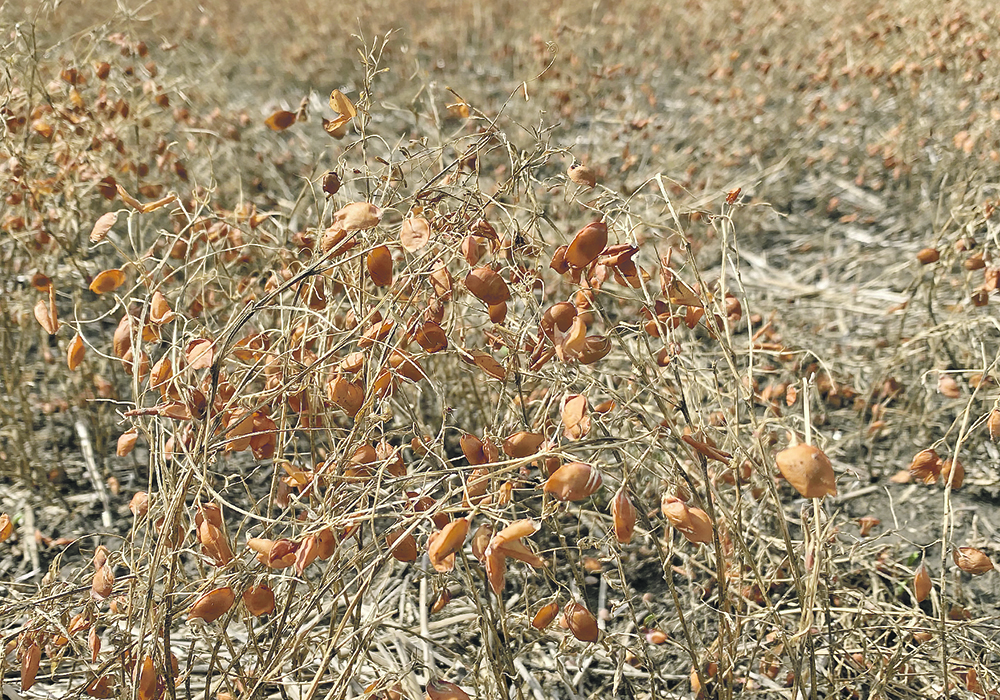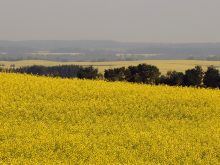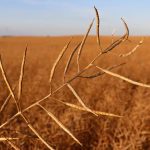High lentil prices, low pea yields and poor pea seed quality due to drought are seen as reasons for lentils’ rising popularity
Lentils have overtaken peas as Canada’s top pulse crop.
Growers told Statistics Canada they intend to plant 4.49 million acres of lentils this year compared to 3.55 million acres of peas.
Lentil acres have been steadily climbing the past three years, while peas have been on the decline.
Carl Potts, executive director of Saskatchewan Pulse Growers, believes there are two main reasons for the shift.
The first is economics. Global lentil demand and prices have been strong resulting in better returns per acre for growing lentils in many regions of the province.
India has returned as the top buyer of Canadian lentils after a period of limiting imports through punitive duties.
That has bolstered demand for the commodity in addition to strong sales to traditional markets such as Turkey and the United Arab Emirates.
The second factor is related to agronomics. Peas have been hit hard by root diseases, resulting in flat to declining yields for the crop.
Diseases such as aphanomyces affect both peas and lentils, but the impact has been harder on peas in most areas of the province, said Potts.
That is because peas have been grown in Saskatchewan for a lot longer than red lentils, which really started to surge around 2006. The longer a crop has been planted in an area, the more susceptible it becomes to disease.
“We just have a longer track record of pea production on some parcels of land than we would on lentils,” said Potts.
The reduction in pea acres would have been far more pronounced if China hadn’t stepped up and replaced more than one million tonnes of annual pea sales to India that have evaporated, he said.
Gary Pappenfoot, manager of Horizon Fertilizers Ltd. in Humboldt, Sask., thinks there is another reason why farmers plan to reduce pea acres in 2022.
“The main reason for our customers walking away from seeding peas is the lack of quality pea seed,” he said in an email.
“Last year’s drought produced a thin seed coat that easily cracked during harvest and therefore lowered seed quality, germination and vigour.”
Germination continued to drop over the winter to 60 percent or lower, meaning seeding rates would have to be increased by one to two bushels per acre.
“It was easier to sell the damaged peas for record high prices historically and seed another crop with lower seed costs, like wheat, despite the higher fertility costs, with less risk to the grower,” said Pappenfoot.
Potts doesn’t know if the shift from pea to lentil acres is a trend or a market gyration. He noted that lentil plantings surged to 5.57 million acres in 2016 and then fell to 3.77 million acres a couple years later.

He thinks pea acres could rebound when new aphanomyces-resistant varieties hit the market in about five years.
Disease protection in peas will come sooner than lentils because there are more available sources of resistance for peas.
“Aphanomyces-resistant varieties, we think, could be a very significant development in helping to keep peas in the rotation in particular,” said Potts.
Another thing that would greatly benefit peas is if the Indian market came back in a significant way.
He thinks the future for both crops looks bright as long as growers have a way to keep disease pressure at bay.
“On the demand side of things we feel the transition to plant-based protein demand is certainly more than a fad. It’s a trend that’s here to stay and likely to increase,” said Potts.
















